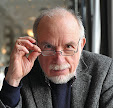Unter dem heimeligen Namen "www.Swiss-Food.ch" betreibt das PR-Büro Kommunikationsplan AG, Zürich eine Website und Aktionen gegen die Pestizid- und die Trinkwasserinitiative. Im Kleindruck erscheinen als Auftraggeber Syngenta, Hersteller von über 1000 Agrargiften in chinesischem Besitz und die Bayer AG, ein Deutsches Unternehmen. Beide haben mit Schweizerischer Nahrungsmittelproduktion wenig zu tun. Weiteres Studium der Firma Bayer AG, liess mir die Haare zu Berge stehen. Doch von Anfang an:
Ab 1898 vermarktete Bayer ein neues Husten- und Schmerzmittel, welches als "heroische Entdeckung" auf den Namen Heroin getauft wurde. Es wurde als harmlos verkauft, Zielpublikum u.a. Kinder, obschon bald klar wurde, dass das Suchtpotential höher ist als beim Morphium. Carl Duisberg, damals Prokurist und später Generaldirektor verlangte von seinen Untergebenen, sie sollten ihre Gegner "mundtot schlagen", wenn diese behaupteten, Heroin sei nicht sicher, "Wir dürfen nicht dulden, dass in der Welt behauptet wird, wir hätten Präparate poussiert, die nicht sorgfältig probiert sind."
Später produzierten Bayer wie auch Hoffmann-LaRoche das Heroin für den lukrativeren Schwarzmarkt, aber 1931 wurde die Produktion bei Bayer auf politischen Druck hin aufgegeben. (Heute erfolgt die Produktion vor allem in Asien und der weltweite Vertrieb hauptsächlich über kriminelle Organisationen. 2015 starben 150'000 Amerikaner an einer Heroin-Überdosis).
Ab 1914 entwickelte und produzierte Bayer chemische Kampfstoffe im Auftrag der Deutschen Heeresleitung, welche diese 1915 erstmals in Ypern einsetzte. Carl Duisberg, inzwischen Generaldirektor berichtete der Heeresleitung 1915 über das neue Phosgen: "Dieses Chlorkohlenoxyd ist das gemeinste Zeug das ich kenne... Die einzig richtige Stelle aber ist die Front, an der man etwas heute ausprobieren kann und auch für die Zukunft nicht sobald wieder Gelegenheit hat, so etwas auszuprobieren... Ich kann deshalb nur noch einmal dringend empfehlen, die Gelegenheit dieses Krieges nicht vorübergehen zu lassen...". Phosgen und andere Kampfstoffe wurden denn auch im Felde ausgiebig "ausprobiert".
"Öffnen Sie das Menschenbassin Belgien": Mit diesen Worten forderte derselbe Duisberg den Kriegsminister auf, Zwangsarbeiter aus dem besetzten Belgien einzusetzen. 60'000 Arbeitssklaven wurden 1916/17 völkerrechtswidrig aus Belgien deportiert und arbeiteten u.a. bei Bayer. 12'000 davon starben.
Duisberg war es auch, der 1925 den Zusammenschluss der Deutschen Chemiefabriken zur I.G-Farben zustandebrachte. Die I.G.-Farben wurde ein Riesenkonzern, hatte ab 1932 Kontakte mit Adolf Hitler und unterstützte die NSADP mit namhaften Spenden. Alle Manager traten der NSADP bei, Juden wurden entlassen, die Firma wuchs durch Übernahme arisierter Betriebe und beteiligte sich aktiv an Planung und Ausführung der wirtschaftlichen Mobilmachung.
Trotz des Zusammenschlusses in den I.G.Farben firmierten Bayer als Pharmasparte und Behring als Impfstoffhersteller weiterhin unter eigenem Namen.
In der Insektizidforschung der Bayer-Labors in Leverkusen wurde 1936 per Zufall das Nervengift Tabun (von "Tabu") entdeckt und unverzüglich der Wehrmacht gemeldet. 1939 folgte das viel giftigere Sarin. Zum Glück wurden diese Nervengase im Weltkrieg nie verwendet, wohl aber wurden sie zu Urvätern vieler Insektenvertilgungsmittel.
Im zweiten Weltkrieg betrieb die IG-Farben das erste ausschliesslich privat finanzierte und gebaute Konzentrationslager, Auschwitz III bzw. Konzentrationslager BUNA-Monowitz genannt. Es stellte die Arbeitskräfte der dortigen IG-Farben-Fabriken für Synthesekautschuk und Treibstoffe bereit. Es waren dort auch reguläre Arbeitskräfte und Zwangsarbeiter beschäftigt. Die Bezahlung der KZ-Häftlinge ging an die SS, welche dafür Bewachung, "Verpflegung" und Bestrafung übernahm. Auf 270x500 Metern Grundfläche waren bis11'000 Häftlinge in Baracken und Zelten zusammengepfercht, durchschnittliche Überlebensdauer 3 Monate.
Wie bei zahlreichen Deutschen Industriebetrieben wurde auch bei Bayer in Leverkusen von1942-45 ein eigenes kleineres Lager "Buschweg" geführt, mit Hunderten von Zwangsarbeitern, Kriegsgefangenen und Arbeitserziehungshäftlingen.
Dr. med. Hellmuth Vetter, ab 1936 SS-Arzt, ab 1937 Mitglied der NSDAP wurde 1938 bei Bayer als wissenschaftlicher Mitarbeiter angestellt. Ab 1941 machte er für Bayer im KZ Dachau (in einem Brief "ich komme mir vor wie im Paradies") Menschenversuche mit Sulfonamiden.
Später machte Dr.Vetter für Bayer auch Häftlingsversuche in Auschwitz und im Mauthausen-Aussenlager Gusen. Ampullen für Versuche an KZ-Häftlingen in Auschwitz haben sich bis nach dem Krieg erhalten, sie waren mit Bayer angeschrieben (die meisten Häftlinge starben). Überliefert ist auch eine Korrespondenz von Bayer mit dem Kommandanten des KZ Auschwitz Höss, in dem 150 KZ-Häftlingsfrauen für Schlafmittelversuche ins Hauptwerk Leverkusen bestellt wurden. Der von der SS verlangte Preis von "200 RM pro Stück" wurde "wegen schlechten Zustandes" von Bayer erfolgreich auf 170 RM heruntergemarktet. Rückmeldung von Bayer: “Die Versuche wurden gemacht. Alle Personen starben. Wir werden uns bezüglich einer neuen Sendung bald mit Ihnen in Verbindung setzen.”(Veröffentlicht durch Zentralkommission zur Untersuchung der Naziverbrechen in Polen. Jan Sehn: Konzentrationslager Oswiecim-Brzezinka - Auschwitz-Birkenau, Warszawa 1957, S. 89 f. Fn.2, Nürnberger Dokumente NJ. 7184).
Unlängst hat Bayer in einer Milliardenübernahme den amerikanischen Konzern Monsanto geschluckt und sich damit Milliardenklagen gegen das Bienengift Glyphosat eingehandelt.
Und jetzt lässt sich die Schweizer PR-Firma Kommunikationsplan AG dazu kaufen, den Deutschen Giftkonzern als gutschweizerischen Nahrungsmittelproduzenten darzustellen. Das Vergiften scheint in der DNA des Konzerns zu stecken.
Mein Grossvater war Professor für organisch-technische Chemie (d.h. für grosstechnische Fabrikation) an der ETH Zürich von 1917-1952. Er hat Firmen in Frankreich, Polen, den USA und Japan beraten. Nur mit der IG-Farben wollte nie etwas zu tun haben, und das schon lange vor dem Krieg. Denn man kann sehr wohl merken und ist auch dafür verantwortlich, von wem man sich in Dienst nehmen lässt...
http://www.cbgnetwork.org/Ubersicht/Zeitschrift_SWB/SWB_2001/SWB_04_01/Menschenversuche/menschenversuche.html (zitiert das Buch von Jan Sehn)
Rates of Parkinson’s disease are exploding. A common chemical may be to blame | Parkinson's disease | The Guardian




